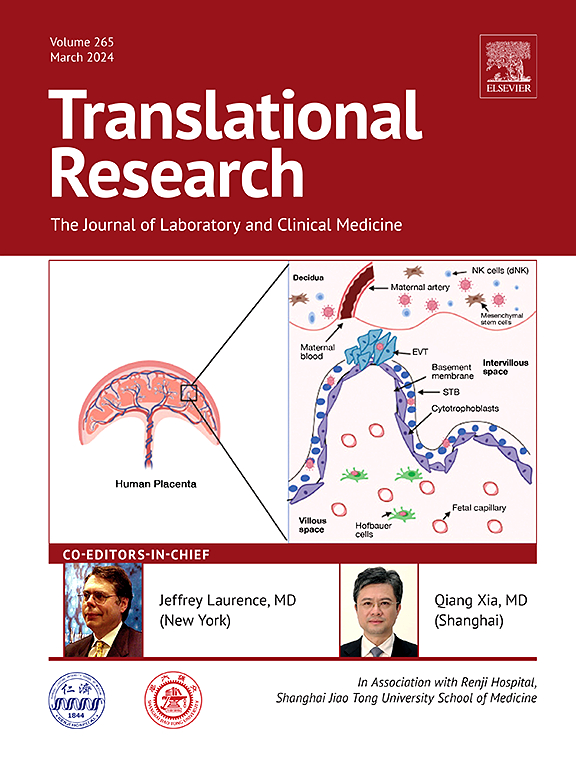Early vascular aging in chronic kidney disease: focus on microvascular maintenance, senescence signature and potential therapeutics
IF 5.9
2区 医学
Q1 MEDICAL LABORATORY TECHNOLOGY
引用次数: 0
Abstract
Chronic kidney disease (CKD) is a strong risk factor for cardiovascular mortality and morbidity. We hypothesized that a senescent phenotype instigated by uremic toxins could account for early vascular aging (EVA) and vascular dysfunctions of microvasculature in end stage kidney disease (ESKD) patients which ultimately lead to increased cardiovascular complication. To test this hypothesis, we utilized both in vivo, and ex vivo approaches to study endothelial and smooth muscle function and structure, and characterized markers related to EVA in 82 ESKD patients (eGFR <15 ml/min) and 70 non-CKD controls. In vivo measurement revealed no major difference in endothelial function between ESKD and control group, aside from higher stiffness detected in the microcirculation of ESKD participants. In contrast, ex vivo measurements revealed a notable change in the contribution of endothelium-derived factors and increased stiffness in ESKD patients vs. controls. In support, we demonstrated that ex vivo exposure of arteries to uremic toxins such as Trimethylamine N-oxide, Phenylacetylglutamine, or extracellular vesicles from CKD patients impaired endothelial function via diminishing the contribution of endothelium-derived relaxing factors such as nitric oxide and endothelium derived hyperpolarizing factor. Uremic arteries displayed elevated expression of senescence markers (p21CIP1, p16INK4a, and SA-β-gal), calcification marker (RUNX2), and reduced expression of Ki67, sirtuin1, Nrf2, and MHY11 markers, indicating the accumulation of senescent cells and EVA phenotype. Correspondingly, treating uremic vessel rings ex vivo with senolytic agents (Dasatinib + Quercetin) effectively reduced the senescence-associated secretory phenotype and changed the origin of extracellular vesicles. Notably, sex differences exist for certain abnormalities suggesting the importance of biological sex in the pathogenesis of vascular complications. In conclusion, the uremic microvasculature is characterized by a “senescence signature”, which may contribute to EVA and cardiovascular complications in ESKD patients and could be alleviated by treatment with senolytic agents.
慢性肾脏病的早期血管老化:关注微血管维护、衰老特征和潜在疗法。
慢性肾脏病(CKD)是心血管死亡和发病的一个重要风险因素。我们假设,尿毒症毒素引发的衰老表型可能是终末期肾病(ESKD)患者血管早期老化(EVA)和微血管功能障碍的原因,最终导致心血管并发症增加。为了验证这一假设,我们利用体内和体外方法研究了内皮细胞和平滑肌的功能和结构,并对 82 例终末期肾病患者(eGFR
本文章由计算机程序翻译,如有差异,请以英文原文为准。
求助全文
约1分钟内获得全文
求助全文
来源期刊

Translational Research
医学-医学:内科
CiteScore
15.70
自引率
0.00%
发文量
195
审稿时长
14 days
期刊介绍:
Translational Research (formerly The Journal of Laboratory and Clinical Medicine) delivers original investigations in the broad fields of laboratory, clinical, and public health research. Published monthly since 1915, it keeps readers up-to-date on significant biomedical research from all subspecialties of medicine.
 求助内容:
求助内容: 应助结果提醒方式:
应助结果提醒方式:


